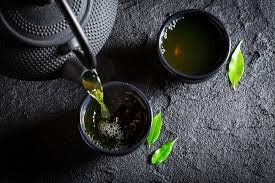The Top 10 Tea Consumers in the World: A Global Perspective
Tea, the quintessential beverage enjoyed by millions worldwide, holds significant cultural, social, and economic importance. According to recent data compiled by leading authorities, the top 10 tea-consuming nations present a fascinating glimpse into global tea habits. Let’s delve into this captivating data and explore the countries that reign supreme in tea consumption.
Tea, known for its myriad flavors and health benefits, has been cherished for centuries across various cultures. Its consumption transcends geographical boundaries, making it one of the most beloved beverages globally. In this article, we’ll unravel the top 10 tea-consuming nations, shedding light on their tea-drinking traditions and preferences.
1. China: The Undisputed Champion China, hailed as the birthplace of tea, unsurprisingly leads the pack as the largest tea consumer globally. With a rich history steeped in tea culture, China’s diverse range of teas, including green, black, white, and oolong varieties, caters to every palate.
2. India: A Nation of Tea Lovers India, famed for its chai tradition, secures the second spot on the list. From the bustling streets of Mumbai to the serene hills of Darjeeling, tea holds a special place in the hearts of Indians. Masala chai, a spiced tea concoction, remains a staple across households and roadside stalls.

Why this News is important:
Understanding Global Consumption Patterns: The knowledge of which countries consume the most tea provides valuable insights into global consumption patterns. It allows policymakers and businesses to tailor their strategies and products to meet the demands of these key markets effectively.
Economic Implications: The prominence of certain nations in tea consumption directly impacts global trade and commerce. For students preparing for government exams in areas such as international trade or economics, comprehending these consumption trends is crucial for a well-rounded understanding of the subject matter.
Historical Context:
Origins of Tea Culture: Tea’s journey traces back thousands of years, originating in ancient China during the Shang dynasty. Initially revered for its medicinal properties, tea gradually evolved into a social and cultural phenomenon, spreading across Asia and beyond.
Colonial Influence: The colonial expansion of European powers in the 17th and 18th centuries played a pivotal role in shaping global tea consumption patterns. The British, in particular, popularized tea drinking in their colonies, leading to its widespread adoption in regions such as India and Sri Lanka.
Key Takeaways from “Top 10 Tea Consumers in the World”
| Serial Number | Key Takeaway |
|---|---|
| 1. | China leads as the largest tea consumer globally. |
| 2. | India secures the second spot, renowned for chai. |
| 3. | Turkey embraces tea as an integral part of its culture. |
| 4. | The UK’s tea-drinking tradition dates back centuries. |
| 5. | Russia’s affinity for tea reflects its cultural heritage. |
Important FAQs for Students from this News
1. What factors contribute to a nation’s ranking in tea consumption?
- Answer: Various factors such as cultural traditions, population size, economic development, and climate influence a nation’s tea consumption.
2. How does tea consumption impact global trade and commerce?
- Answer: Tea consumption patterns can significantly affect global trade dynamics, influencing supply chains, pricing, and market demand for tea-producing nations.
3. Are there regional variations in tea preferences within countries?
- Answer: Yes, within tea-consuming nations, there are often regional variations in tea preferences, influenced by factors such as climate, cultural heritage, and local customs.
4. What historical events shaped tea consumption around the world?
- Answer: Historical events such as colonialism, trade routes, and cultural exchanges have played a crucial role in shaping tea consumption patterns globally.
5. How does tea consumption impact a nation’s social and cultural fabric?
- Answer: Tea consumption often holds significant social and cultural importance, serving as a symbol of hospitality, tradition, and community bonding in many societies.
Some Important Current Affairs Links















